Teach: Part 1—Redstone power sources
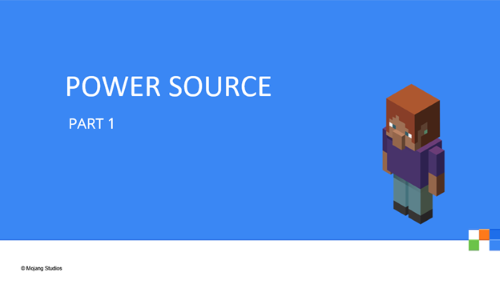
We’ll model an actual lesson you can use with your students. You’ll build just as your students might and then you’ll assess and reflect on your work. As the last step you’ll use the lesson planner and apply to your own classroom. In the first portion of our lesson, Teach, we’ll demonstrate the skills before you build in a Minecraft world.
Because there are many Redstone skills to learn, we’ll apply the Release and Reflect model after each learning opportunity so that skills learned are bite-sized. In this power sources unit, there are four learning components. There’s an opportunity for Release after each new skill.
Finding and crafting Redstone
Redstone is a mysterious substance used to power mechanisms and traps. In its rawest form, Redstone is an ore found underground, but it can be mined and refined into Redstone dust. As well as forming the basis for Redstone circuits, it’s also an important crafting ingredient for Redstone components.
Watch and do: Find Redstone
This video explains how to mine Redstone. Pause and play the video as needed.
Watch and do: Craft Redstone
After you have mined Redstone, it’s important to learn how to craft Redstone. Play the video to learn how to craft Redstone and then try it on your own.
Charge a block
To use Redstone, it’s necessary to understand what’s meant by "charging a block." A block charges when it receives a Redstone signal. A charged block can power blocks directly touching it. Some blocks can't be charged (such as glass).
Watch and do: Charge a block
This video explains how to charge a block and then practice in the world.
Manual activators
There are several ways to power a circuit. Each power source offers a different combination of signals strength and interactions with other Redstone components. Let’s look at your options so you can decide which is right for your build.
The simplest power sources in Minecraft are buttons and levers. Buttons and levers can be placed on any side of a solid block, including the top and bottom. When pushed, a button provides a temporary Redstone signal at maximum strength. Levers also produce the maximum Redstone signal. However, unlike buttons, levers are switches that toggle the Redstone signal on and off.
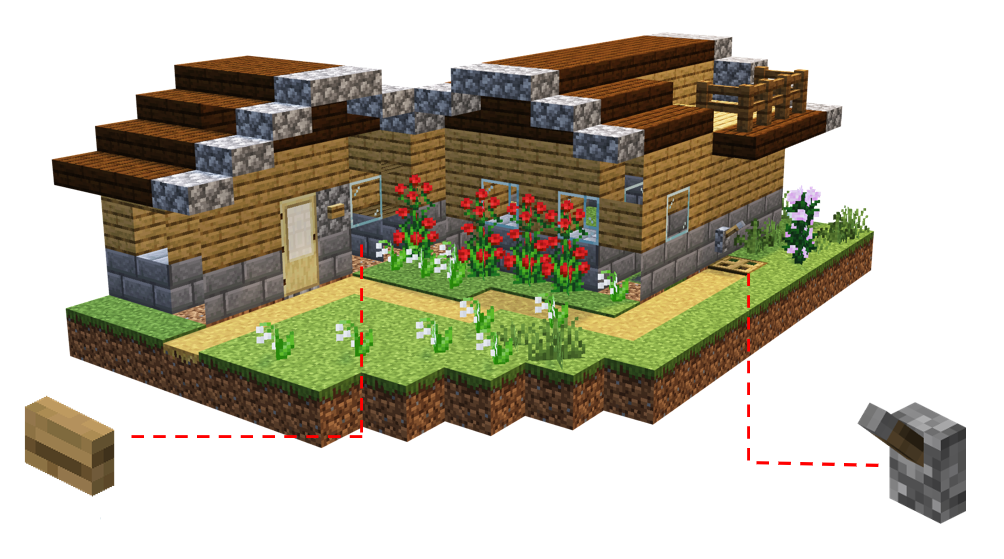
Pressure plates
Pressure plates are made with wood or stone, and are used in simple, non-trap builds. Each sends a temporary Redstone signal at the maximum strength through solid blocks or Redstone components. They activate when stepped on or when items are dropped on them.
Weighted pressure plates produce a signal strength relative to the number of entities on them, such as includes players, mobs, and dropped items. Placing more entities on the plate creates a stronger signal strength.
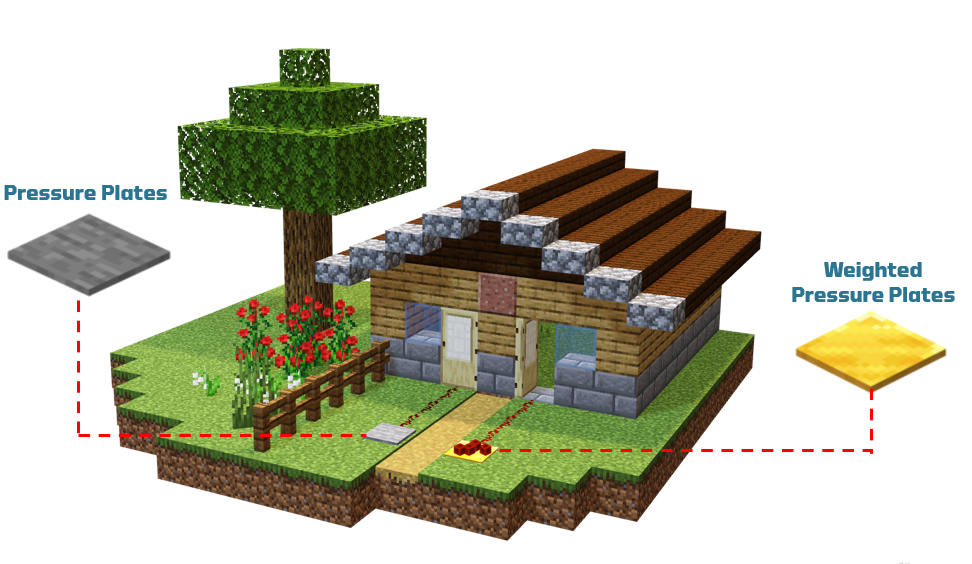
An example for use is to create a seamless transition into a house.
Tripwire and trapped chest
The nearly invisible tripwire is a particularly crafty way to activate a trap. Tripwire hooks need to be attached together by string, but can be placed up to 40 blocks apart. When the tripwire is broken the hook will output a maximum signal to the adjacent blocks.
The trapped chest is almost indistinguishable from its regular counterpart, except for a red band around the clasp. The outputs depend on how many people are viewing the chest’s contents—the more people trying to steal from the chest, the more powerful the signal.
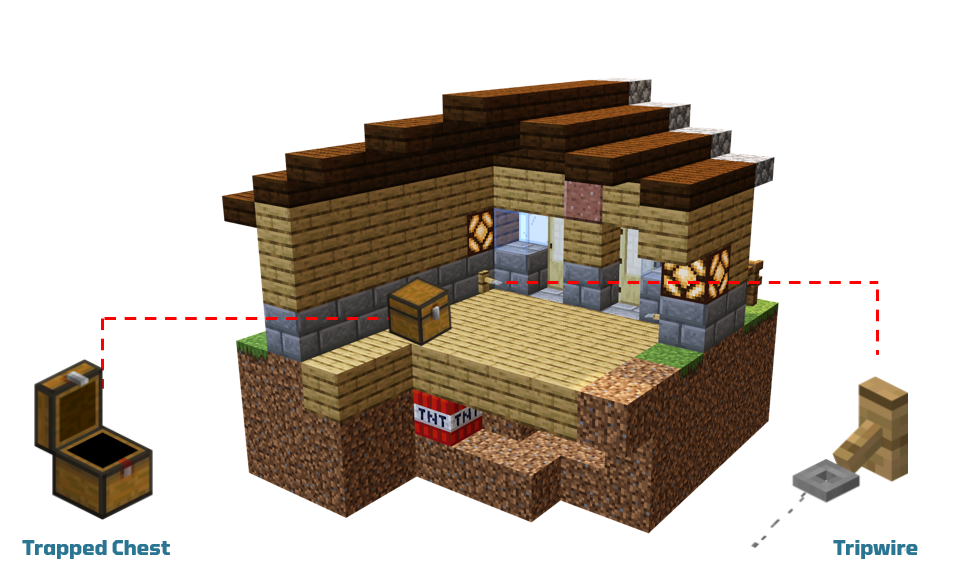
An example of use would be to notify you when a chest is being opened or to cause TNT to explode.
Sensors
Daylight sensors produce various levels of power depending on the amount of sunlight—more power when it’s daytime and less at night, though weather has an effect. Sensors can be inverted so they produce more power when the world is darker, making it a nighttime sensor.
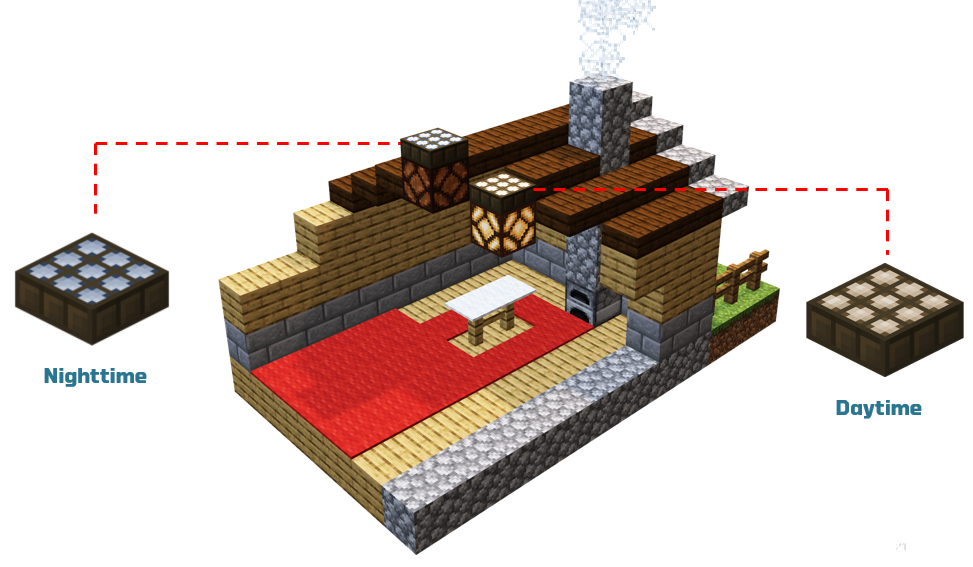
An example of use would be house lights coming on at night.
Constant activators: block, and torch
In some situations, you’ll want a constant power source that doesn’t require an interaction to generate a signal. A constant activator is handy in these situations.
Redstone blocks, when placed, can power Redstone components on adjacent blocks in all directions, as well as mechanisms like doors and pistons.
As well as being a light source, Redstone torches provide a maximum Redstone signal of 15. Redstone torches can be inverted in Redstone circuits so that they’re constantly off rather than on.
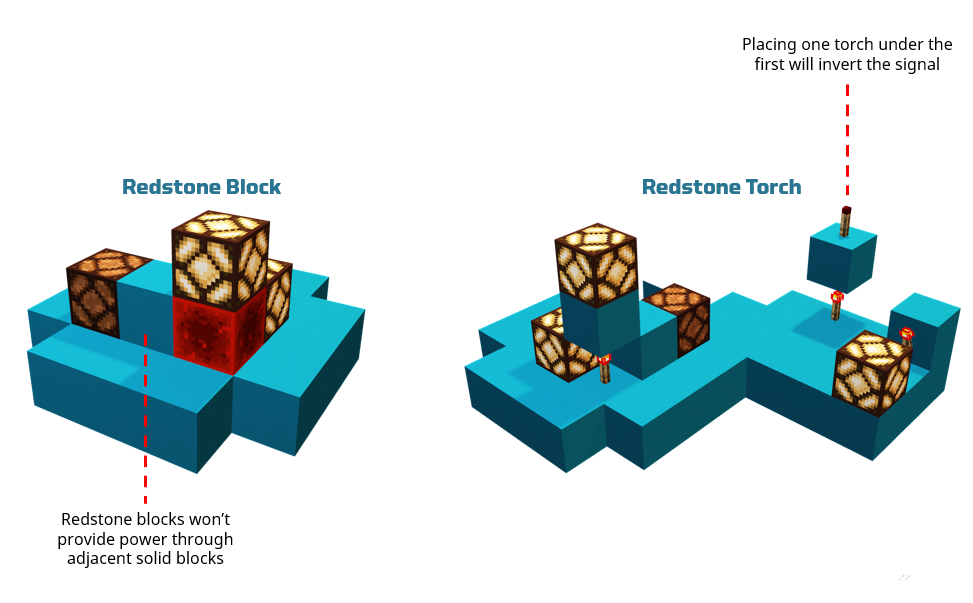
Examples for use are:
- Redstone blocks are useful to continuously power an item such as keeping a Redstone lamp on.
- Torches are useful to invert a signal to cause an item to change its state, such a piston push out. When we cause the torch to invert, it loses its signal and the piston retracts.
Observers
An observer has two functional faces—an observer face, which monitors the block directly ahead, and an output face, which produces the Redstone signal in the opposite direction. Among various blocks, the observer will observe the activation of powered rails, pistons extending, and grass to dirt spreading. In this example, a daylight sensor inverts or senses a change in light. An observer detects it and powers the circuit to activate a sound from a note block.
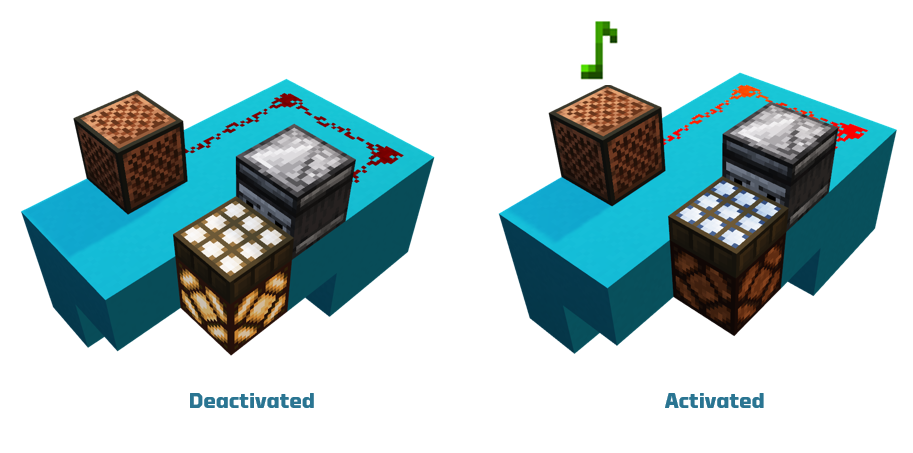
An example for use would be to detect if someone enters a space or creates a circuit of signals to activate a rotating beacon like a lighthouse.